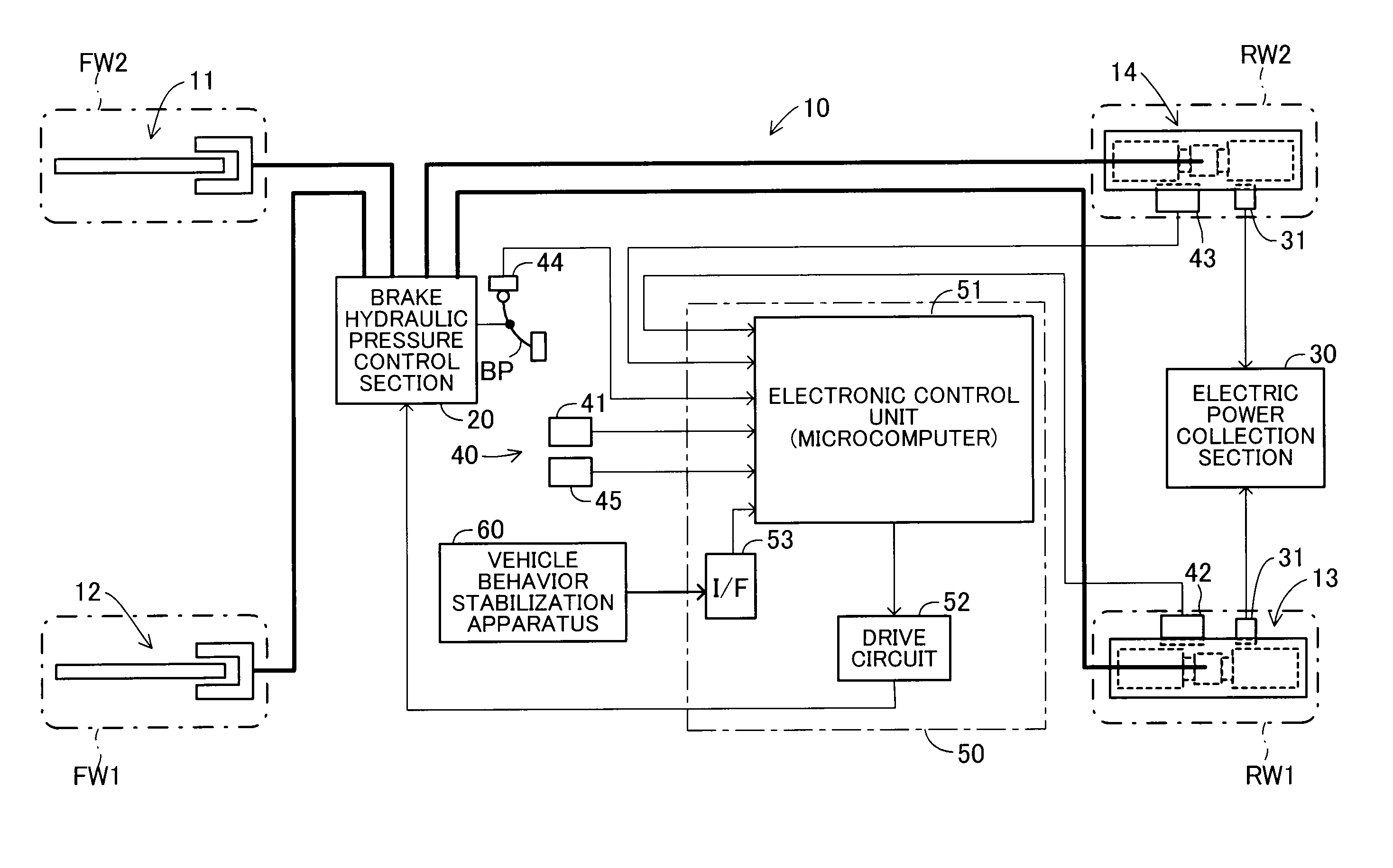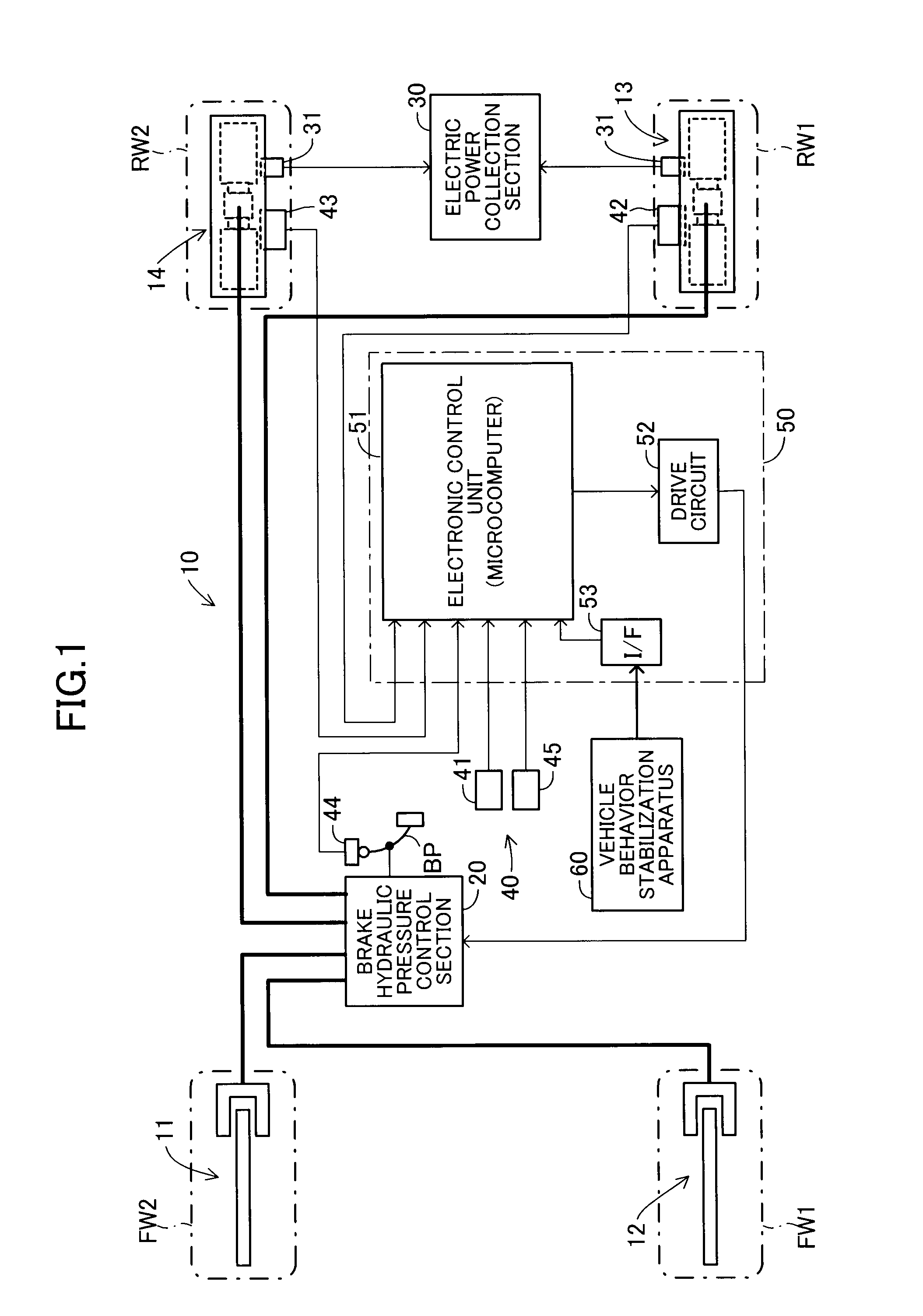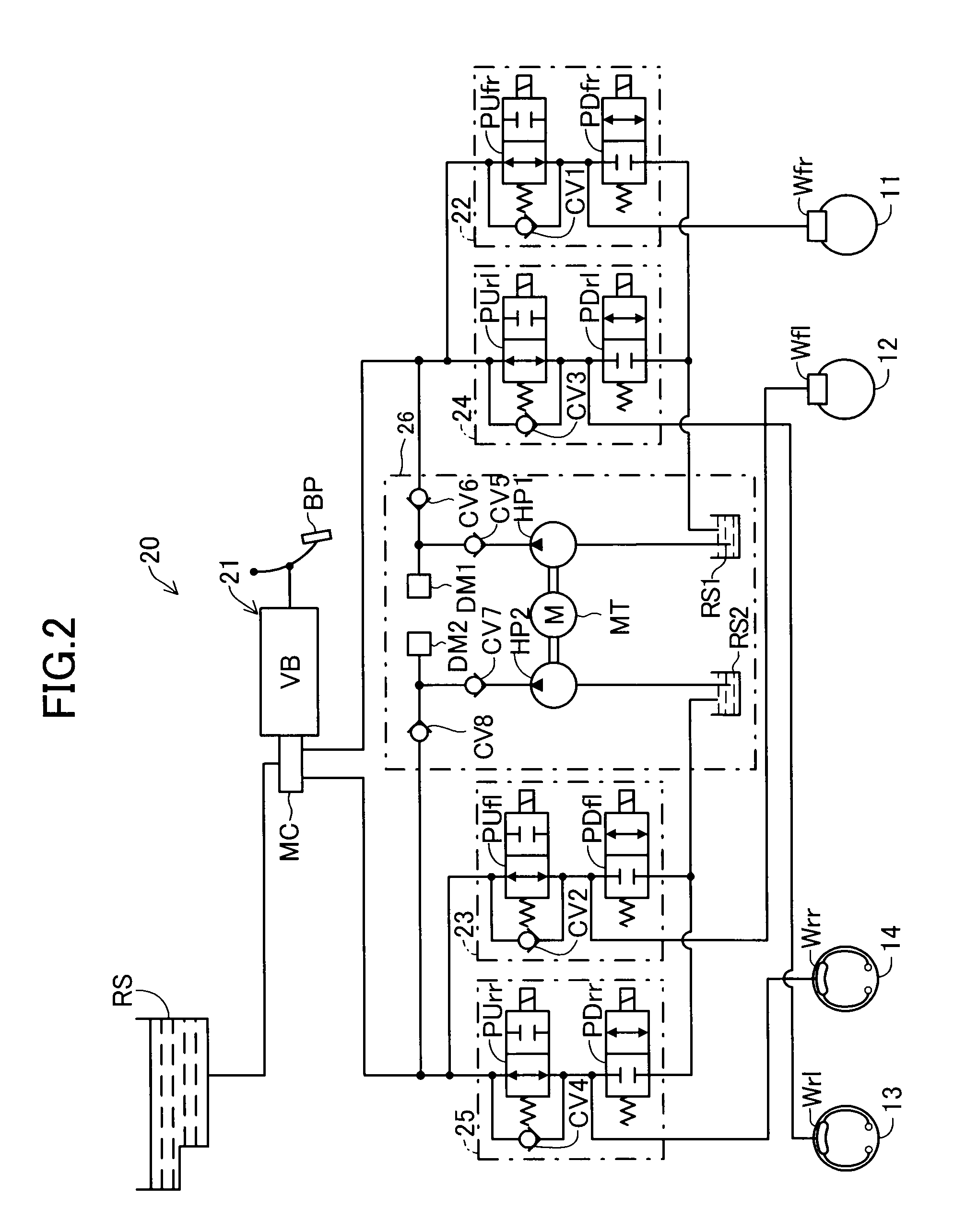Braking apparatus for vehicle
a technology for braking apparatus and vehicles, applied in the direction of braking systems, electric devices, transportation and packaging, etc., can solve the problem of reducing the friction coefficien
- Summary
- Abstract
- Description
- Claims
- Application Information
AI Technical Summary
Benefits of technology
Problems solved by technology
Method used
Image
Examples
first embodiment
a. First Embodiment
[0057]Vehicular braking apparatuses according to various embodiments of the present invention will now be described in detail with reference to the drawings. FIG. 1 schematically shows the configuration of a vehicle on which a vehicular braking apparatus 10 which is common between first and second embodiments of the present invention is mounted.
[0058]The braking apparatus 10 includes brake units 11, 12 which apply braking forces against rotations of left and right front wheels FW1, FW2 and which are excellent in cooling, and brake units 13, 14 which apply braking forces to rotations of left and right rear wheels RW1, RW2 and which are excellent in heat retention. Although not illustrated in detail in FIG. 2, the brake units 11, 12 are disc brake units. The disc brake units include brake discs which rotate together with the left and right front wheels FW1, FW2, and calipers which are fixed to, for example, front axles and have wheel cylinders Wfr, Wfl. Brake pads f...
second embodiment
b. Second Embodiment
[0110]In the above-described first embodiment, the present invention is embodied in such a manner that, when the internal space temperatures T of the brake units 13, 14 provided for the left and right rear wheels RW1, RW2 are lower than the predetermined temperature (reference temperature) Ts, which is set to coincide with the lower limit temperature of the optimum temperature range, the first braking force map shown in FIG. 6 is employed so as to operate the brake units 13, 14 preferentially, to thereby cause the internal space temperatures T to quickly exceed the predetermined temperature Ts. However, the present invention may be embodied as follows. On the basis of the dimensionless performance index shown in FIG. 4, the upper limit temperature of the optimum temperature range may be set as a previously set, predetermined temperature Tu; and, when the internal space temperatures T of the brake units 13, 14 exceed this predetermined temperature Tu, the brake un...
third embodiment
d. Third Embodiment
[0164]In the above-described embodiments and modifications, the present invention is embodied such that the brake units 11 to 18 provided for the left and right front wheels FW1, FW2 and the left and right rear wheels RW1, RW2 produce frictional braking forces; and the heating side of each thermoelectric conversion section 31 is heated, for example, within the optimum temperature range by using friction heat generated at the time of braking, so as to convert thermal energy to electric energy at a satisfactory conversion efficiency, to thereby generate regenerative electric power.
[0165]In this case, the brake units each including a thermoelectric conversion section 31 (first braking force application means) are not limited to those disposed near the wheels, and may be disposed at any location, so long as a brake unit(s) can apply braking forces to the wheels. In the below description, a third embodiment in which a brake unit including a thermoelectric conversion se...
PUM
 Login to View More
Login to View More Abstract
Description
Claims
Application Information
 Login to View More
Login to View More - R&D
- Intellectual Property
- Life Sciences
- Materials
- Tech Scout
- Unparalleled Data Quality
- Higher Quality Content
- 60% Fewer Hallucinations
Browse by: Latest US Patents, China's latest patents, Technical Efficacy Thesaurus, Application Domain, Technology Topic, Popular Technical Reports.
© 2025 PatSnap. All rights reserved.Legal|Privacy policy|Modern Slavery Act Transparency Statement|Sitemap|About US| Contact US: help@patsnap.com



